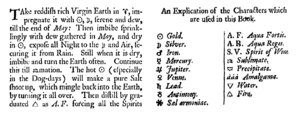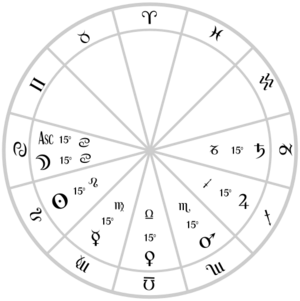Classical planet facts for kids
A classical planet is a space object you can see without a telescope. These objects appear to move across the sky. They stand out from the "fixed stars" that seem to stay in place.
From Earth, people can see seven classical planets. They are also called the seven luminaries. These are, from brightest to dimmest: the Sun, the Moon, Venus, Jupiter, Mars, Mercury, and Saturn.
Ancient Greek astronomers like Ptolemy studied these objects. They called them planets, which means 'wanderers' in Greek. This name shows that these objects seemed to wander across the sky compared to the stars. The Greeks were the first to connect these planets to ideas about their appearance and meaning.
Later, with telescopes, people found many more objects in space. For example, Galileo Galilei discovered the moons of Jupiter in 1610. Today, the word "planet" has a different meaning. A planet is now defined as a natural object that orbits the Sun (or another star). It also has to be big enough to clear its path around the Sun. Because of this new definition, only five of the original seven classical planets are still called planets. These are Venus, Jupiter, Mars, Mercury, and Saturn. The Earth, Uranus, and Neptune are also now considered planets.
Contents
History of Classical Planets
Babylonian Discoveries
The ancient Babylonians were among the first to study the sky. They also recognized seven planets. They even had a list of these planets.
Here is the order the Babylonians listed them:
- The Moon, called Sin.
- The Sun, called Shamash.
- Jupiter, called Merodach.
- Venus, called Ishtar.
- Saturn, called Ninip.
- Mercury, called Nebo.
- Mars, called Nergal.
Mandaean Beliefs
In a religion called Mandaeism, the names of the seven planets come from the Babylonian names. In Mandaeism, these seven planets are generally not seen as good. They are thought to be part of the group around Ruha, who is the Queen of the World of Darkness. However, some planets can be linked to good things.
Each planet is believed to travel in a special ship. Drawings of these ships can be found in Mandaean holy books.
| Planet | Mandaic Name | Akkadian Name | What it's linked to |
|---|---|---|---|
| Sun | Šamiš | Šamaš | light and life |
| Venus | Libat | Delebat | love and having children |
| Mercury | Nbu | Nabû | learning, writing |
| Moon | Sin | Sīnu | miscarriages, unusual births |
| Saturn | Kiwan | Kayyamānu | Jews, Saturday |
| Jupiter | Bil | Bēlu | male, "hot and moist" |
| Mars | Nirig | Nergallu | violence, Islam |
Symbols of the Planets
The symbols for the classical planets are very old. They appeared in old books from the Byzantine Empire. In even older Greek writings, the Sun was shown as a circle with a ray. The Moon was shown as a crescent shape.
The symbols for Mercury, Venus, Jupiter, and Saturn come from old Greek papers. The symbols for Jupiter and Saturn are like short versions of their Greek names. The symbol for Mercury looks like a caduceus, which is a staff with two snakes wrapped around it.
Some experts believe these symbols came from even older pictures. For example, a map from the 2nd century shows gods linked to the planets. Mercury holds a caduceus. Venus has a special necklace. Mars has a spear. Jupiter has a staff. Saturn has a scythe (a curved blade). The Sun has a circle with rays. The Moon wears a headdress with a crescent.
The modern symbol for the Sun, a circle with a dot (☉), first appeared during the Renaissance.
Planets and Our Days
In ancient Greek astronomy, people believed the Earth was the center of the universe. This was called the Ptolemaic system. They placed the planets in order of how close they were to Earth. This order was: Moon, Mercury, Venus, Sun, Mars, Jupiter, and Saturn.
They also divided the day into seven-hour periods. Each period was ruled by one of these planets. The first hour of each day was named after its ruling planet. This is how the Roman seven-day week got its names. For example, in Spanish, Miércoles (Wednesday) comes from Mercury. In French, mardi (Tuesday) comes from Mars.
In English, our days of the week mostly come from old Germanic Norse gods. For example:
- Wednesday is Wōden’s-day (Wōden is like Mercury).
- Thursday is Thor’s-day (Thor is like Jupiter).
- Friday is Frige-day (Frige is like Venus).
These Norse gods were matched to the Roman gods based on their roles. For example, Venus and Frige were both goddesses of love. The name Saturday still comes from the Roman god Saturn.
| Weekday | Planet | Greek god | Germanic god | English name |
|---|---|---|---|---|
| dimanche (French) | Sol (Roman Sun god) | Helios | Sól | Sunday |
| lundi (French) | Luna (Roman Moon goddess) | Selene | Máni | Monday |
| mardi (French) | Mars (Roman god of war) | Ares | Týr | Tuesday |
| mercredi (French) | Mercury (Roman messenger god) | Hermes | Óðinn | Wednesday |
| jeudi (French) | Jupiter (Roman king of gods) | Zeus | Þórr | Thursday |
| vendredi (French) | Venus (Roman goddess of love) | Aphrodite | Frigg | Friday |
| samedi (French) | Saturn (Roman god of time) | Cronus | Njörðr | Saturday |
Alchemy and Planets
Alchemy was an old practice that mixed science and magic. Alchemists believed that each classical planet was linked to one of the seven metals known at that time.
- The Moon was linked to silver.
- Mercury was linked to quicksilver (liquid mercury).
- Venus was linked to copper.
- The Sun was linked to gold.
- Mars was linked to iron.
- Jupiter was linked to tin.
- Saturn was linked to lead.
Because of this, the symbols for the metals and their linked planets were often the same. Alchemists thought other metals were just different forms of these seven.
Alchemy and Astrology were often connected. They both looked for "hidden knowledge." Astrology also used the idea of classical elements (like fire, water, air, earth). Many modern astrologers still use these elements to understand astrological charts.
Some alchemists also linked the planets to parts of the human body:
| Planet | Body Part |
| Sun | Heart |
| Moon | Brain |
| Mercury | Lungs |
| Venus | Kidneys |
| Mars | Gall bladder |
| Jupiter | Liver |
| Saturn | Spleen |
Planets in Astrology Today
Western Astrology
In Western astrology, each planet is believed to rule certain zodiac signs. This means the planet has a strong influence when it is in that sign.
| Planet | Ruling sign(s) | Weakest sign(s) | Strongest sign | Opposite sign |
|---|---|---|---|---|
| Sun | Leo | Aquarius | Aries | Libra |
| Moon | Cancer | Capricorn | Taurus | Scorpio |
| Mercury | Gemini and Virgo | Sagittarius and Pisces | Virgo | Pisces |
| Venus | Libra and Taurus | Aries and Scorpio | Pisces | Virgo |
| Mars | Aries and Scorpio | Libra and Taurus | Capricorn | Cancer |
| Jupiter | Sagittarius and Pisces | Gemini and Virgo | Cancer | Capricorn |
| Saturn | Aquarius and Capricorn | Leo and Cancer | Libra | Aries |
Indian Astrology
Indian astronomy and astrology also recognize the seven visible planets. They also add two invisible planets called Rahu and Ketu.
| Sanskrit Name | English Name | What it Represents | Day |
|---|---|---|---|
| Surya (सूर्य) | Sun | The Soul, leaders, father, ego | Sunday |
| Chandra (चंद्र) | Moon | Emotions, queen, mother | Monday |
| Mangala (मंगल) | Mars | Energy, action, confidence | Tuesday |
| Budha (बुध) | Mercury | Communication and thinking | Wednesday |
| Brihaspati (बृहस्पति) | Jupiter | The great teacher, wealth, growth | Thursday |
| Shukra (शुक्र) | Venus | Feminine qualities, pleasure, love | Friday |
| Shani (शनि) | Saturn | Learning the hard way, career, long life | Saturday |
| Rahu (राहु) | North Lunar Node | Can cause chaos, works on hidden feelings | none |
| Ketu (केतु) | South Lunar Node | supernatural influences, works on hidden feelings | none |
See also
- Antikythera mechanism
- Behenian fixed star
- Celestial spheres
- Definition of planet
- List of former planets
- List of Mesopotamian deities#Major deities § Notes
- Monas Hieroglyphica of John Dee
- Olympian spirits
- Planetae
- Worship of heavenly bodies
- Wufang Shangdi




